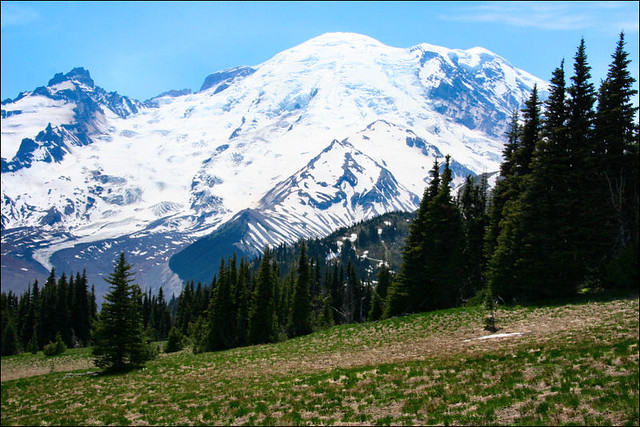God said, "I have given you every herb bearing seed, which is upon the face of the earth...; to you it shall be for meat."
The scriptures mention references related to banquets and feasts with these amazing super-foods. Grains were an important part of the ancient diet.
They are mentioned by wise men of old, such as Ezekiel in Ezekiel 4:9
"Take for yourself also wheat, and barley, and beans, and lentils, and
millet, and spelt, and put them in one vessel, and make bread of it;
[according to] the number of the days that you shall lie on your side,
even three hundred ninety days, you shall eat of it."
BARLEY
Barley is one of the oldest grains grown today. It was used by the ancient Greeks and Hebrews and was popular in Japan and China for thousands of years. The Romans also used this for energy and endurance by soaking the seeds in water overnight so the seeds energy got released into the water.
This provided them with the ability to go for long periods of time without eating.
Today this precious grain is used to feed livestock, ferment beer, or make soups.
There are many nutritious benefits to this ancient grain. If you want to get the most benefit out of it, make sure to buy the brownest kernels you can find.
Barley contains an ample amount of nutrients, such as, fiber, selenium, phosophorus, tryptophan, copper, and manganese.
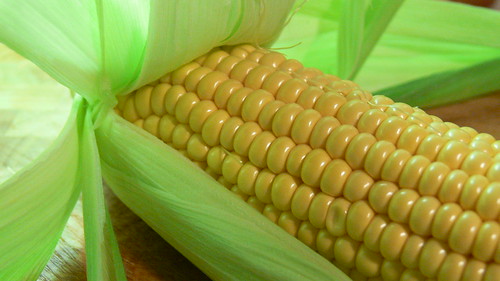 CORN
Corn, undoubtedly one of the most widely used grains. Native Americans grew this grain thousands of year before Christopher Columbus entered the New World. When Christopher Colombus discovered this grain, he took it with him to Spain. Since that time, this sweet grain has traveled the world.
From flour to cereal, or oil, t
CORN
Corn, undoubtedly one of the most widely used grains. Native Americans grew this grain thousands of year before Christopher Columbus entered the New World. When Christopher Colombus discovered this grain, he took it with him to Spain. Since that time, this sweet grain has traveled the world.
From flour to cereal, or oil, the majority of the foo
ds we consume today contain corn.
Types of Corn:
- Dent - also called "field" corn, it's white or yellow and used mainly to feed lifestock. It gets it's name from the imprint it makes when the kernels dry at the top
- Flint - entirely surrounded by hard starch, this type of corn is mostly grown in South and Central America.
- Flour - this type of corn is mostly soft starch, it is most commonly used in baked goods.
- Pod - this strange looking corn was preserved by the South American Indians in the belief that it contained magical properties. It is believed to be the first type of corn ever cultivated.
- Popcorn - the history of popcorn goes back to more than 5,000 years.The colonists loved this type of popcorn so much that they ate it for breakfast. Today, Americans eat more than one billion pounds of popcorn per year
- Sweet - sweet corn has been a favorite in many households for its sweet flavor. It's kernels are high in sugar and contain many vitamins and minerals.
MILLET
 This tiny, round, sandy-colored grain is essential to meals in many parts of the world. It is an essential food in India and North Africa. It's filled with nutrients like manganese, tryptophan, magnesium, and phosphorus.
Millet is mentioned in the bible as an ingredient for unleavened bread.
This tiny, round, sandy-colored grain is essential to meals in many parts of the world. It is an essential food in India and North Africa. It's filled with nutrients like manganese, tryptophan, magnesium, and phosphorus.
Millet is mentioned in the bible as an ingredient for unleavened bread.
It has a strong taste and complements a variety of foods.
Types of Millet:
- Barnyard:
- Finger: this type grows best in cool, elevated areas. It requires a bit more water but produces small grains.
- Foxtail:
- Kodo:
- Little:
- Pearl: this is the most grown type of millet. This type of millet is very productive in depleted soils.
- Proso: this type of millet can be grown in various soil types. It mostly used as birdseeds due to its attractive color.
- Sorghum: this type of millet grows well with in poorly cultivated areas. It's also rich in vitamins and minerals such as B,D, & K.
RYE

Rye is a grain that is can be closely compared to wheat and barley. Most of the popular foods today use this.
Not only does this grain thrive in difficult environments, but it also is full of nutrition. It contains essential vitamins and minerals such as iron, manganese and phosphorus. It's also high in protein and fiber.
WHEAT
 Wheat was one of the first crops ever grown. It's been around for thousands of years and is a big part of human history.
This grain was used in Egypt to make bread.
Wheat was one of the first crops ever grown. It's been around for thousands of years and is a big part of human history.
This grain was used in Egypt to make bread.
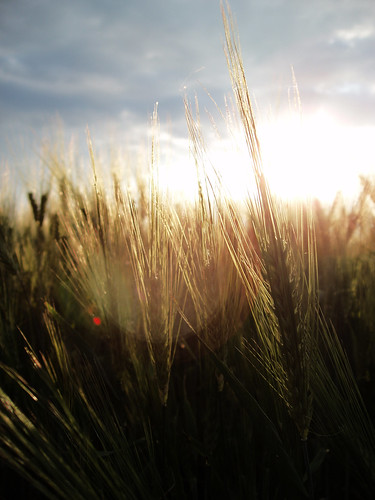 OATS
This common grain is often eaten at breakfast and used in breads, cereals, or deserts. Oats are very nutritious and contain vitamins B and E, calcium, iron and other minerals. Oats come in groats, steel-cut, rolled, flour, or bran. Oats were found in Egyptian tombs around 2000 b.c.
OATS
This common grain is often eaten at breakfast and used in breads, cereals, or deserts. Oats are very nutritious and contain vitamins B and E, calcium, iron and other minerals. Oats come in groats, steel-cut, rolled, flour, or bran. Oats were found in Egyptian tombs around 2000 b.c.
RICE
 Rice is the staple food for over half of the worlds population. It is a great carbohydrate, protein, vitamins, and minerals. This grain goes perfectly with a wide variety of dishes. There are 2 types of rice: Long-grain rice and Short -grain rice.
Long-grain rice: this type of rice seperates when cooked.
Rice is the staple food for over half of the worlds population. It is a great carbohydrate, protein, vitamins, and minerals. This grain goes perfectly with a wide variety of dishes. There are 2 types of rice: Long-grain rice and Short -grain rice.
Long-grain rice: this type of rice seperates when cooked.
Short-grain rice: the extra starch in this type of rice causes it to be extra soft and chewy.
There are many varieties of rice. These varieties include:
Basmati: It's grown in Pakistan, Bangladesh, and India and comes in brown and white.
Sushi: short-grain rice that's somewhat transparent when cooked.
Sweet: this type of rice is sticky and compact rice becomes very soft when cooked. This type of rice goes way back and is extremely popular.
Texmati: this type of rice is grown in Texas. It's a combination of basmati rice & long grain rice. It is low in fat and high in carbs.
Arborio: named after a town in the Piedmont and Lombardy regions of northwest Italy. It is short and plump and comes in white and brown. It also has a variety of vitamins and minerals.
QUINOA
 This tiny, nutrition-filled grain is a complete protein. It contains all nine of the essential amino acids and contains many vitamins and minerals.
This grain has been around for thousands of years and is native to Peru, Bolivia and Chile. It was grown by the Incas and called the mother grain.
The types of quinoa are:
White
Red
Black
Credits:
This tiny, nutrition-filled grain is a complete protein. It contains all nine of the essential amino acids and contains many vitamins and minerals.
This grain has been around for thousands of years and is native to Peru, Bolivia and Chile. It was grown by the Incas and called the mother grain.
The types of quinoa are:
White
Red
Black
Credits:
photo credit: <a href="http://www.flickr.com/photos/aleksejleonov/7652532154/">Aleksej Leonov</a> via <a href="http://photopin.com">photopin</a> <a href="http://creativecommons.org/licenses/by-sa/2.0/">cc</a>
photo credit: <a href="http://www.flickr.com/photos/courgettelawn/297366992/">courgettelawn</a> via <a href="http://photopin.com">photopin</a> <a href="http://creativecommons.org/licenses/by-nc-nd/2.0/">cc</a>
photo credit: <a href="http://www.flickr.com/photos/melalouise/299260951/">melalouise</a> via <a href="http://photopin.com">photopin</a> <a href="http://creativecommons.org/licenses/by/2.0/">cc</a>
photo credit: <a href="http://www.flickr.com/photos/from_a_maine-iacs_point_of_view/946254484/">Phil Dubois</a> via <a href="http://photopin.com">photopin</a> <a href="http://creativecommons.org/licenses/by/2.0/">cc</a>
photo credit: <a href="http://www.flickr.com/photos/ricephotos/438489839/">IRRI Images</a> via <a href="http://photopin.com">photopin</a> <a href="http://creativecommons.org/licenses/by-nc-sa/2.0/">cc</a>
photo credit: <a href="http://www.flickr.com/photos/wheatfields/3028938705/">net_efekt</a> via <a href="http://photopin.com">photopin</a> <a href="http://creativecommons.org/licenses/by/2.0/">cc</a>

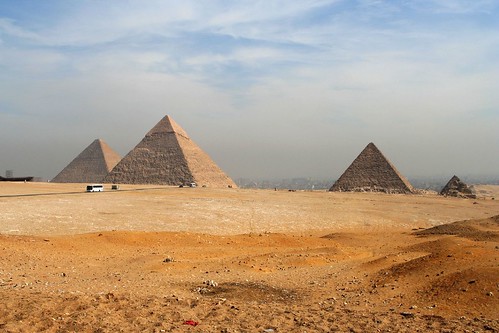 Priest-astronomers studied the constellations and tracked the movement of the planets.
Priest-astronomers studied the constellations and tracked the movement of the planets.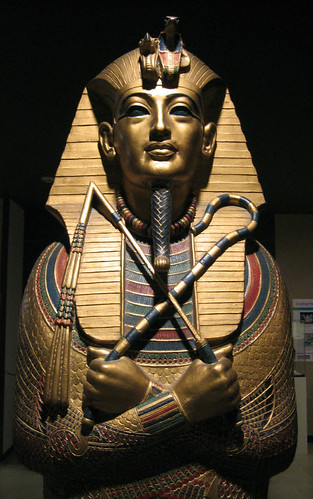 From building pyramids to creating their own irrigation systems, mathematics was widely used in Egypt.
From building pyramids to creating their own irrigation systems, mathematics was widely used in Egypt.



